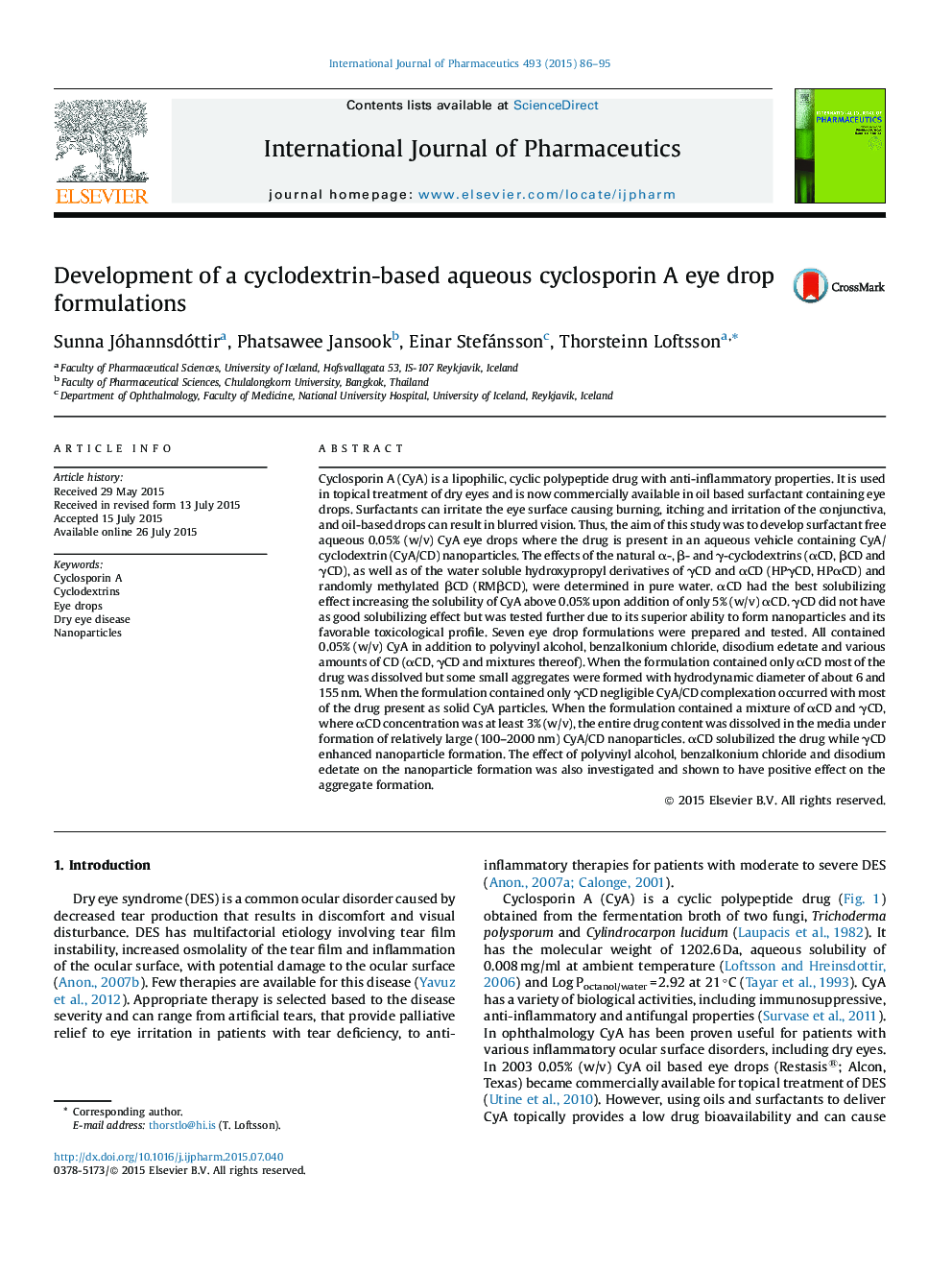| کد مقاله | کد نشریه | سال انتشار | مقاله انگلیسی | نسخه تمام متن |
|---|---|---|---|---|
| 2501236 | 1557331 | 2015 | 10 صفحه PDF | دانلود رایگان |
Cyclosporin A (CyA) is a lipophilic, cyclic polypeptide drug with anti-inflammatory properties. It is used in topical treatment of dry eyes and is now commercially available in oil based surfactant containing eye drops. Surfactants can irritate the eye surface causing burning, itching and irritation of the conjunctiva, and oil-based drops can result in blurred vision. Thus, the aim of this study was to develop surfactant free aqueous 0.05% (w/v) CyA eye drops where the drug is present in an aqueous vehicle containing CyA/cyclodextrin (CyA/CD) nanoparticles. The effects of the natural α-, β- and γ-cyclodextrins (αCD, βCD and γCD), as well as of the water soluble hydroxypropyl derivatives of γCD and αCD (HPγCD, HPαCD) and randomly methylated βCD (RMβCD), were determined in pure water. αCD had the best solubilizing effect increasing the solubility of CyA above 0.05% upon addition of only 5% (w/v) αCD. γCD did not have as good solubilizing effect but was tested further due to its superior ability to form nanoparticles and its favorable toxicological profile. Seven eye drop formulations were prepared and tested. All contained 0.05% (w/v) CyA in addition to polyvinyl alcohol, benzalkonium chloride, disodium edetate and various amounts of CD (αCD, γCD and mixtures thereof). When the formulation contained only αCD most of the drug was dissolved but some small aggregates were formed with hydrodynamic diameter of about 6 and 155 nm. When the formulation contained only γCD negligible CyA/CD complexation occurred with most of the drug present as solid CyA particles. When the formulation contained a mixture of αCD and γCD, where αCD concentration was at least 3% (w/v), the entire drug content was dissolved in the media under formation of relatively large (100–2000 nm) CyA/CD nanoparticles. αCD solubilized the drug while γCD enhanced nanoparticle formation. The effect of polyvinyl alcohol, benzalkonium chloride and disodium edetate on the nanoparticle formation was also investigated and shown to have positive effect on the aggregate formation.
Figure optionsDownload high-quality image (126 K)Download as PowerPoint slide
Journal: International Journal of Pharmaceutics - Volume 493, Issues 1–2, 30 September 2015, Pages 86–95
